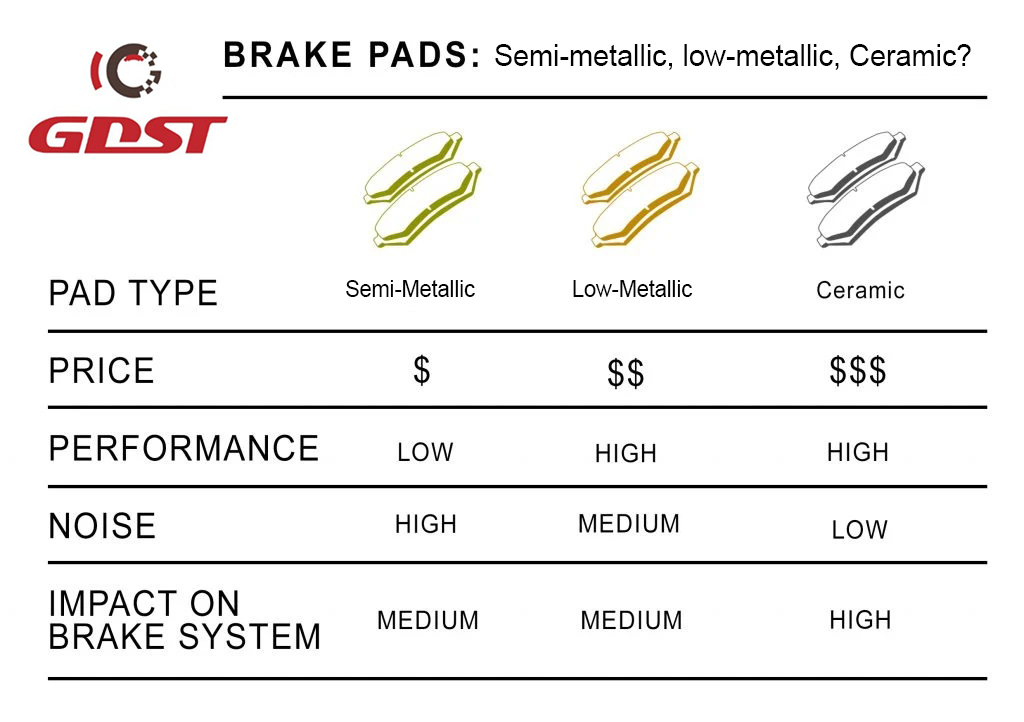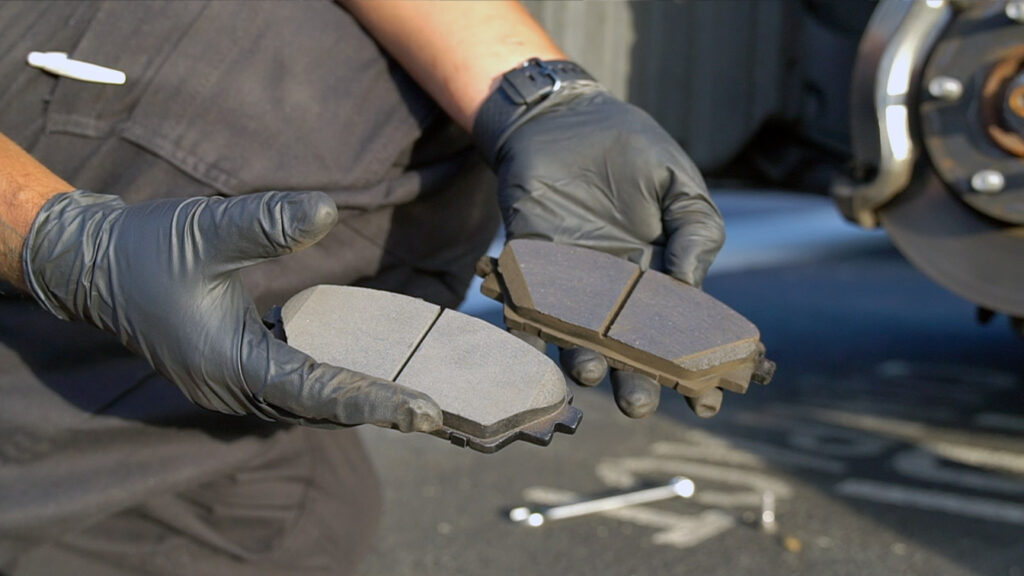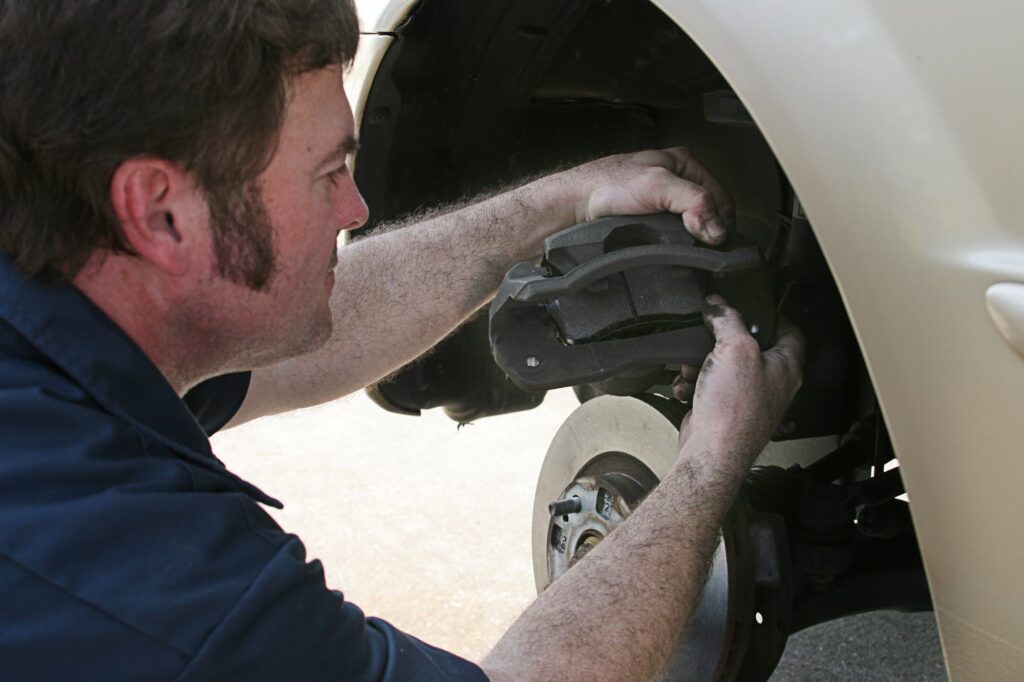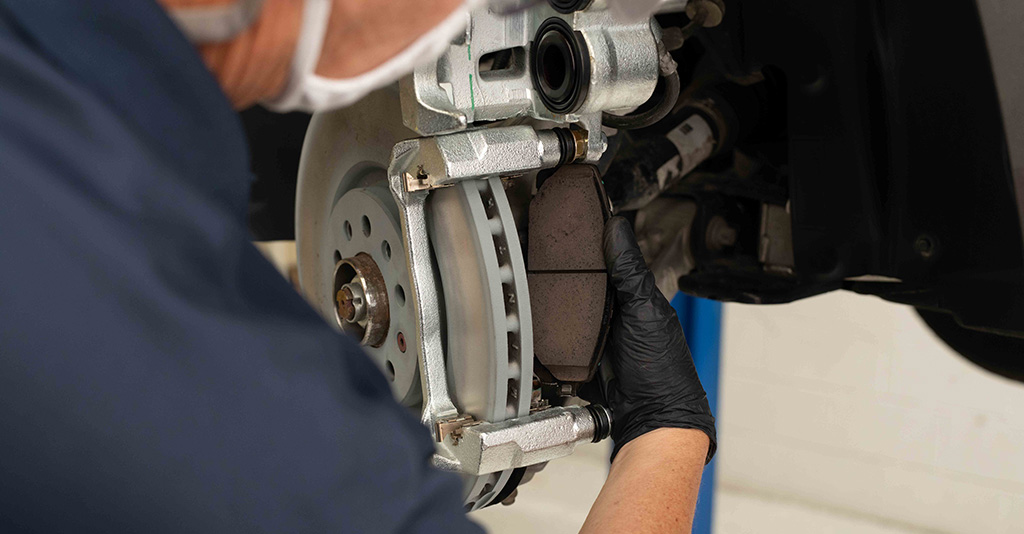When it comes to your vehicle’s safety and performance, the brake pads you choose are of vital importance. Several materials are available in the market, each with its advantages and disadvantages. This guide is intended to help you understand the options and to explain why ceramic brake pads are better, for individual buyers or wholesalers.
Ceramic brake pads are famous for their long-lasting and silent operation. That’s why drivers favor them. Compared with other materials, they have more excellent braking performance, less dust, and longer life. They can provide you with the best performance and little maintenance.
But what about the other materials? How do they compare with ceramic?
Let’s go further into the brake pad world to learn the differences.

Are Ceramic or Metallic Brake Pads Better?

The argument of ceramic and metallic brake pads is about performance. The key points are stopping power, noise, dust, and heat.
Ceramic pads are favored for their quiet operation and less dust. They are made of ceramic fibers and nonferrous fillers, which provide a smoother and cleaner braking experience. So they are suitable for daily driving and luxury vehicles.
Metallic pads, on the other hand, are made from a mixture of iron, copper, steel, and graphite, bonded together with a resin. They provide excellent heat dissipation and superior stopping power, especially under heavy use such as in racing or heavy-duty applications. However, this comes at the cost of increased noise and brake dust, which can be a significant downside for some users.
The choice between ceramic and metallic pads depends on your specific driving needs and preferences.
If you prioritize quiet operation and cleanliness, ceramic pads are superior.
If you require maximum stopping power and are less concerned about noise and dust, metallic pads may be your better option.
What Brake Pad Material Lasts the Longest?

Ceramic brake pads are famous for their long service life compared with other materials.
They are made of a dense ceramic material mixed with copper fibers, which makes them extremely durable and resistant to wear. Ceramic pads can keep their integrity and braking performance under a wide range of temperatures and driving conditions, which contributes to their long life.
They are less aggressive to the brake rotors than metallic pads, so they can last much longer as well as extend the life of the rotors.
Metal brake pads are made of iron, steel, copper, and other metals. They can dissipate heat well and have good stopping power, especially under harsh or heavy driving conditions. However, the metal composition makes them wear down faster than ceramic pads. Moreover, they may wear the brake rotors more quickly, which will increase the maintenance cost.
As a general rule, ceramic brake pads offer the longest lifespan. They are durable, quiet, and cause minimal rotor wear. So in the long run, they are more cost-effective for most drivers. Metallic pads have better braking performance, but wear out faster and lead to quicker rotor degradation.
How Much Longer Do Ceramic Brake Pads Last?

Ceramic brake pads usually have a longer life than metallic brake pads, because the material is different. It depends on many factors, such as driving habits, vehicle types, and driving conditions. But in general, ceramic brake pads can last from 30,000 to 70,000 miles, while metallic brake pads only last from 20,000 to 50,000 miles.
The ceramic pads are made of ceramic material with copper fibers. They can endure higher brake temperatures and do less harm to the brake rotor. What’s more, they produce less noise and brake dust than metallic pads.
The ceramic pads are more expensive than the metallic ones. However, they last longer and have other advantages, such as durability, less noise, and less rotor wear. In a word, they can save you money in the long run.
What Is a Disadvantage of Ceramic Brake Pads?

Ceramic brake pads, while offering several advantages such as reduced brake dust, less noise, and a generally longer lifespan compared to other types, also come with certain disadvantages. One notable disadvantage is their cost. Ceramic brake pads are typically more expensive than their metallic or organic counterparts. This higher cost can be a significant factor for vehicle owners who are mindful of maintenance expenses.
In addition, they don’t work well in extreme conditions.
Ceramic brake pads may not perform as well in very cold or very harsh conditions as compared to metallic pads. Metallic pads tend to offer better performance in a wider range of temperatures and conditions due to their material composition. Ceramic pads, while excellent for everyday use and offering a quiet, clean, and durable option, might not be the best choice for high-performance or heavy-duty vehicles that require maximum stopping power under all conditions.
In Conclusion
Choosing the right brake pad material is essential for balancing safety, performance, and cost. Ceramic brake pads offer an impressive combination of durability, low noise, and minimal dust, making them an excellent choice for many drivers. However, it’s important to consider your specific driving conditions and vehicle requirements when making your selection.



